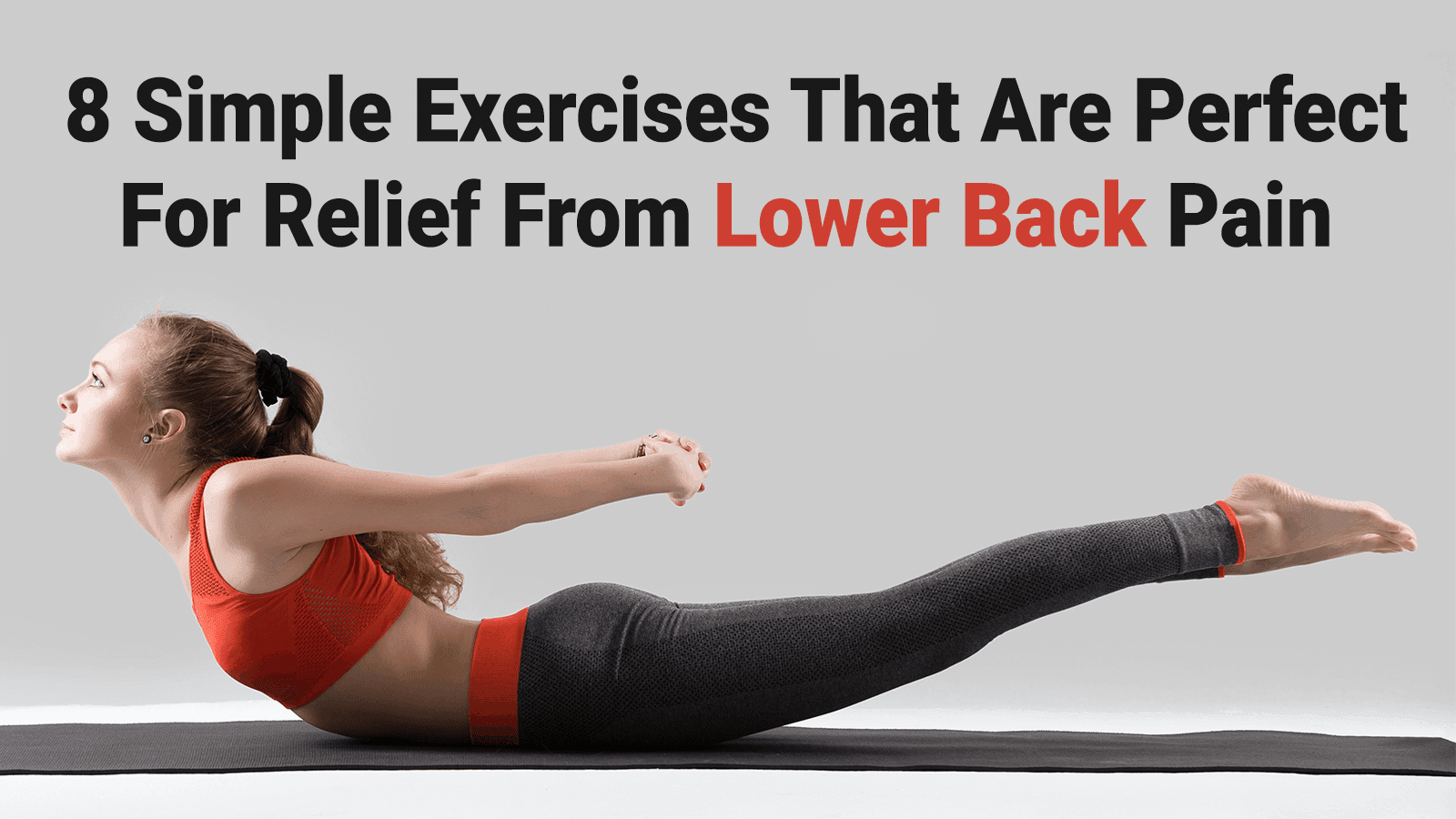Does your lower back hurt? Many of us who spend much time sitting down will have problems with our lower backs. Lower back pain is very common. Up to 80 percent of adults will have this problem at some point. Pain can get in the way of everyday activities and prevent you from enjoying life. Fortunately, some easy exercises will help heal lower back pain naturally by strengthening your core and back muscles.
Here is even better news. You can start these exercises with just one minute daily and build your exercise routine over time.
Along with exercises that will heal lower back pain, we have also found some exercises that may do more harm than good. It’s important to avoid exercises that will only make things worse. Your muscles will be stronger when you practice these exercises consistently, and your back will have more natural support. You may notice a significant improvement in your symptoms. You might even lose a little weight, further reducing the strain on your body.
This 1-minute Routine Will Fix your Lower Back Pain in No Time
Here is an assortment of excellent exercises that will help you to strengthen your core and your lower back. Try doing each exercise for one minute. As you get stronger, you can increase the repetitions. Start on a safe, flat surface. You may want to put down a yoga mat to cushion your back.
Good Lower Back Pain Exercises:
1. Partial Crunches
Partial stomach crunches will help to strengthen your core. They are great for strengthening your back as well. Lie flat on the floor and bend your knees. Hold your stomach muscles tight. Raise your shoulders off the floor with your hands behind your head or crossed on your chest. Don’t use your elbows or your arms to pull yourself up.
2. Hip and Back Stretch
Lie flat on your back with your arms extended in a T position. Bend your knees. Put both knees on one side, stretching your lower back. Turn your head away from your knees. Keep your shoulders flat on the floor. After one minute, do the same exercise on the other side.
3. Spine Stretching
Lie flat on your back with your arms at your sides. Bend your left leg and stretch your right leg out. Tilt your head away from the bent knee. Make sure you do not move your shoulders.
4. Hamstring Stretches
Lie flat on your back. Bend one knee. Looping a towel or a fitness band over the foot on your straight leg, pull the towel back slowly and straighten your knee. This will give you a gentle stretch. Hold it for 30 seconds and then do the other side.
5. Modified Leg Lifts
This leg lift avoids the problems of traditional leg lifts. Lie flat on your back with one leg straight and one bent at the knee. Slowly lift the straight leg up about 6 inches and hold it for a few seconds. Gently lower the leg. Do this ten times and then switch sides.
6. Bridges
Lie flat on your back with your arms at your sides. Bend your knees and let only your heels touch the floor. Put your weight in your heels while you squeeze your backside. Slowly raise your hips until your body straightens from your shoulders to your knees. Hold for 6 to 10 seconds. Slowly lower yourself down to the floor.
7. Pelvic Tilts
Lie flat on the floor. Bend your knees. Make sure that your feet stay flat on the floor. To perform the tilt, squeeze your abdominal muscles tight. Tilt your pelvis up a little bit and hold it for 10 seconds. Repeat for 1 minute.
Exercises to Avoid (They Can Worsen Lower Back Pain):
1. Toe Touches
Standing toe touches can aggravate lower back pain. They can overstretch the muscles in your lower back and your hamstrings.
2. Leg Lifts with Both Legs
If you have lower back pain, lying on your back and lifting both legs simultaneously can make you feel worse and even injure you.
Final Thoughts on Saying Goodbye to Lower Back Pain
Try these easy 1-minute exercises and build a healthy body one step at a time. Starting slow is fine. You’ll find that your lower back pain will start to feel better if you do these regularly. Look at your seating arrangements, especially when using the computer, and ensure that your chair and workspace are ergonomically correct. Having good posture will help with your pain. If you don’t see any results from these exercises, it’s a good idea to visit your doctor and see whether you have any other complications.
















 Community
Community

